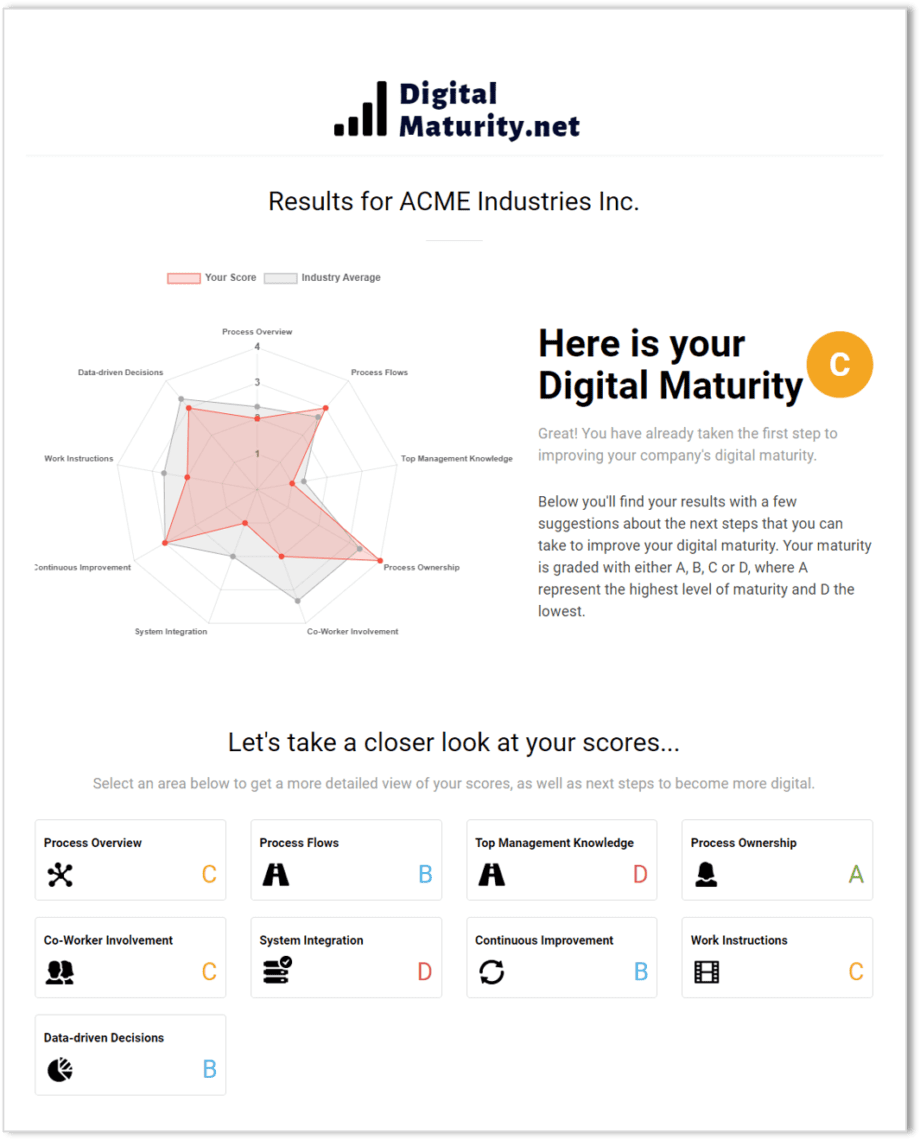
Discover the level of your digital maturity and find ways to optimize it

Most of our workdays are filled with digitalized processes – in one way or another. How can we however assess the level of our digital maturity? And what can we do to bring more value to our digital processes?
We completely understand that finding out how digitally matured you are and closing the gaps to the highest efficiency is important. Therefore, together with our selected consulting partners we have developed the Digital Maturity Assessment. So you can get the answers to those questions within just a couple of minutes.
The assessment is not scientific but it is based on many years of experience with process digitalization. It is meant to inspire reflection and discussion internally. As well as to reach a higher level of digital maturity and improve digital processes within your organization.
Get to know your digital maturity
So how does the Digital Maturity Assessment exactly work? To be able to get a comprehensive overview of your current digital maturity and to benchmark your company we set 9 critical success factors:
– Top Management Knowledge
– Process Flows
– Process Ownership
– Co-Worker Involvement
– Process Overview
– Continues Improvement
– System Integration
– Data-Driven Decisions
– Work Instructions
They have been selected with inspiration from Lean and the Capability Maturity Model Integration (CMMI).
We will evaluate your digital maturity score based on your answers to multiple-choice questions. You will see your results immediately. They will give you a detailed view of your scores, as well as offer recommendations for the next steps to becoming more digital. Best of all – the assessment takes only a couple of minutes of your time!
We will grade each of the 9 above-mentioned areas with either A, B, C, or D. The score A represents the highest level of maturity and D the lowest. As we want you to gain a comprehensive overview of your digital maturity, we further take your score and compare it to the industry average. This allows you to not only understand your process digitalization but lets you see where others within your industry are.

Do not worry that you don’t have a perfect score
Digital maturity is an ongoing process that unfolds across your organization over time. So do not worry that your score is not perfect. No organization in the world can become digitally mature in the snap of a finger. It is a continuous process of growing. But you are on the right track by finding out where your organization is and what more you can do! The more your company learns how to respond to the constantly changing digital environment, the more digitally mature you will become.
We hope that Gluu helps you on your way towards optimization of your digital processes and that you enjoy your experience with the Digital Maturity Assessment.
What is my organization’s maturity level? Take the Digital Maturity Assessment.

Try Gluu for free
Sign up for a 30-day trial.
No credit card required.
Frequently Asked Questions
The different stages that a company can go through are usually categorized as beginning, developing, maturing, and leading. These stages represent the varying levels of digital adoption, integration, and optimization within an organization.
To assess its current level, an organization can conduct a self-assessment or seek assistance from external consultants specializing in digital transformation. By analyzing key areas such as technology infrastructure, data utilization, digital skills, and customer focus, companies can better understand their strengths and weaknesses in terms of digital maturity.
Improving digital maturity within a company involves implementing strategies such as investing in advanced technology solutions, fostering a culture of innovation and digital literacy among employees, forging strategic partnerships, and staying abreast of industry trends. By consistently striving for digital advancement and transformation, organizations can enhance their competitive edge and adapt to the rapidly evolving business landscape.
About the Author









